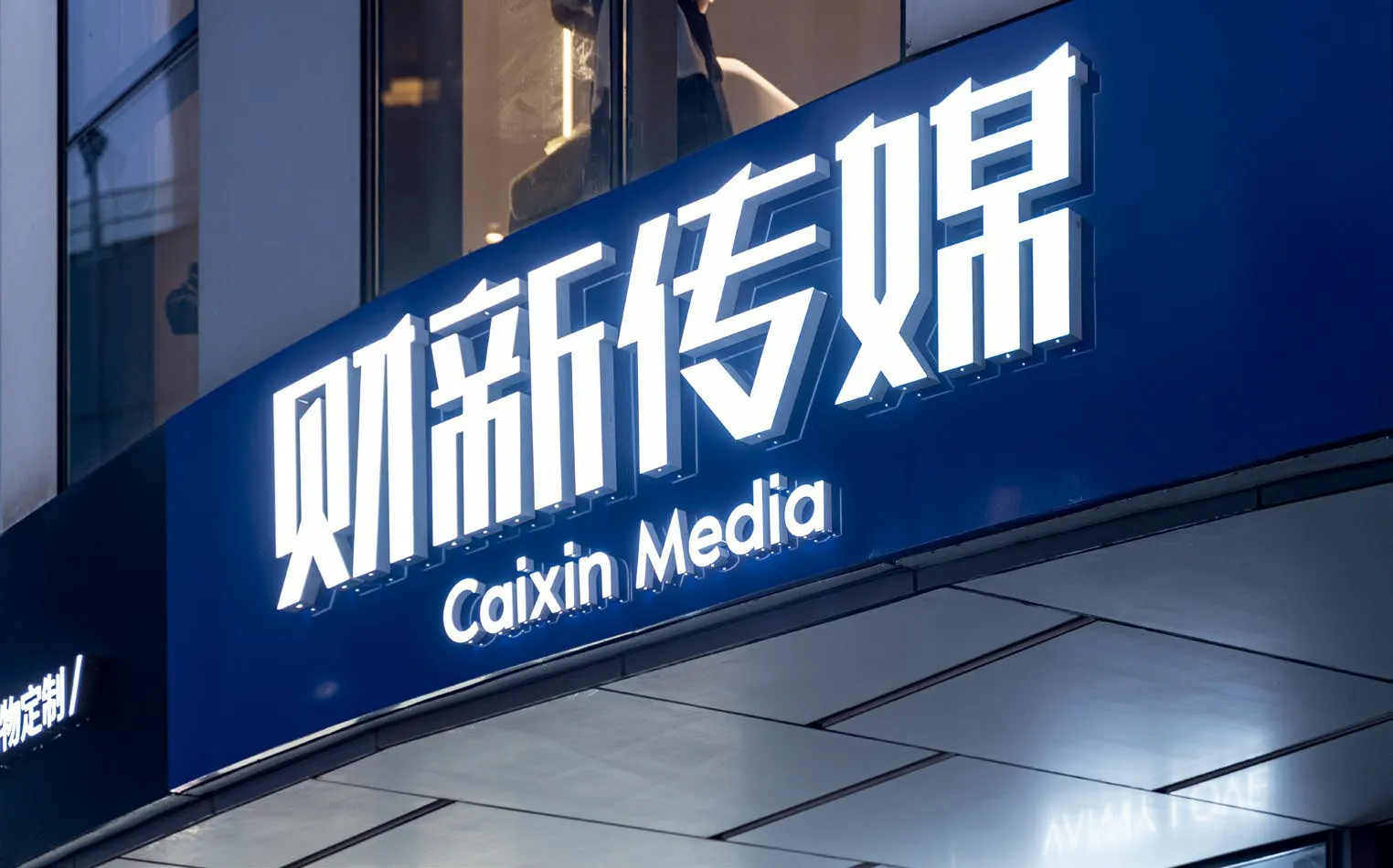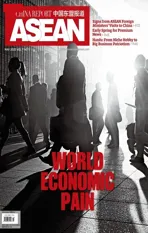Early Spring for Premium News
2022-06-22ByLianZhixian
By Lian Zhixian
Building paywalls despite pushback,Caixin has explored a variety of methods of charging for news

(GETTY CREATIVE)
On October 16,2017,Caixin Media surprised everyone with an announcement that it would charge its readers to access its platform,thus becoming China’s first media outlet to put all of its online news behind a subscription paywall.
Four years later,in December 2021,the International Federation of Periodical Publishers (FIPP) released its 2021 Global Digital Subscription Snapshot.Caixin ranked 10th on the list behind The New York Times and Washington Post as the only Chinese media outlet to make the list.Braving controversy,Caixin has tested the waters to explore paid subscription models in the Chinese press and publishing industry.
Dire Situation for Traditional Media
China’s press and publishing industry is grappling with a“cold winter.”In 2020,the country’s publication of books,periodicals,newspapers,audio-visual products and electronic publications dropped by 7.36 percent from 2019,and total printing volume decreased by 8.94 percent from the previous year.It was not the first year of this decline.All of traditional media has been exploring possible breakthroughs.
Around each year end,many print publications announce closure or suspension of operations as the situation continues snowballing.The fate of relevant media outlets differs:Some simply close,some merge into new publications,and some splinter into numerous media resources to promote media convergence and transformation.Modern media companies create apps and develop a variety of new media functions while publishing news and information.
In 2010,Chengdu Business Daily New Media Laboratory was established and began experimenting with an electronic lifestyle magazine called Life of Tomorrow.In 2014,the“Conversation Topics”app by Chengdu Business Daily went live.Unfortunately,its server crashed on the very first day of service.“It’s going to take a long time for traditional media to transform,”said Chen Shuping,former editor-in-chief of the Chengdu Business Daily.“Although we recognized the importance of technical personnel in our new media development outline,it’s still impossible to turn a media outlet into a technology company overnight.”Alongside extensive technical problems,traditional media practitioners are also having trouble shifting operations to new media.“Operating an app takes a lot of work,”said Wang Shaohua,former executive editor of Life of Tomorrow.“A user retention rate of 40-50 percent in the second month would be very high.If you can’t double new users by the third month,you’re already on a downward trajectory,in theory.”
The China New Media Research Report 2020 showed that 94.26 percent of surveyed mainstream media outlets had opened digital media centers.The Report also mentioned that overall digital media development currently faces three big problems:lack of talent,lags in technology,and shortage of funds.

In 2020,the country’s publication of books,periodicals,newspapers,audiovisual products and electronic publications dropped by7.36 percentfrom 2019,and total printing volume decreased by8.94 percentfrom the previous year.

TheChina New Media Research Report 2020showed that94.26 percentof surveyed mainstream media outlets had opened digital media centers.
However,Caixin was not the first Chinese media outlet to erect a paywall.Early in 2010,people.com.cn began to charge readers for the electronic edition of People’s Daily.Xu Dandan,former director of information at people.com.cn,explained that the move was not expected to yield much revenue in the short term,but instead boost print distribution and provide technical support for the fight against piracy.However,the policy was soon significantly adjusted to offer free reading on the day an article was released.In 2017,People’s Daily tore down its paywall,opting for free distribution of all digital content.Global Times and Wenzhou Press Group,two others that started testing domestic paywalls in 2007,also gave up on the practice.
Consequently,Caixin’s 2017 paywall announcement sparked a heated discussion in the industry.After so many failed attempts,how did Caixin think it could succeed?
Content First
To everyone’s surprise,Caixin gained 700,000 subscribers in four years after announcing the policy of charging readers.For three consecutive years,it was listed in the Global Digital Subscription Snapshot as the media outlet with the largest number of paid users in China and the 10th largest in the world.In the“cold winter”of traditional media,Caixin saw opportunity in the barren fields.
Li Xin,vice president of Caixin Media,admitted that the company’s paywall has been facing challenges in both technology and user education.In China,paid subscription is at an early stage of development,so it would seem unlikely for many to pay just for news content.However,Caixin’s transition to paid news service was not sudden.In 2010,Caixin.com was established as a website with limited paid content.It introduced Caixin Weekly,Caixin Data Plus,and Caixin Global as fee-based products supplementing its free content.Nearly eight years of simultaneous free and paid content accumulated a considerable user base for the website.Seeking to better serve its most avid users and provide high-quality original financial news content,Caixin finally announced the policy of charging readers to access its platform.
“When a news product is good enough,users recognize the value as a creative work and are willing to pay for it,”commented Wang Shuo,editor-in-chief of Caixin Media.He believes that professional and in-depth original financial news is in high demand in China.
While increasing investment in providing more value-added service to its paid users,Caixin has been investing more in improving content quality by continuing to pursue highquality news reports,building its own database,and realizing comprehensive embedding of financial data in news content.Caixin is also investing in improving its broadcast quality and enriching its content.
“After reading every complaint and adjusting accordingly,we finally got our subscriber numbers to increase in 2019,”said Li Xin.“The increase spiked after the outbreak of COVID-19.In a crisis like this,reliable information has been more important than ever before.”

(IC PHOTO)
Zhu Junsheng,one of Caixin’s paid readers,shares that sentiment.He recalled that during the pandemic,especially in the early days,the internet was full of pseudoscience and rumors.He became more acutely aware of the importance of reliable and quality information.“If you’re paying for it,it has to be rock solid content,”he said.When Caixin began to charge users,Zhu didn’t hesitate to sign up.
While focusing on improving content quality,Caixin began to cultivate habitual paid reading and took a tentative step toward fostering the paid news market,providing useful experience for the transformation of other traditional Chinese media outlets.Following Caixin’s example,Sanlian Life Weekly,Southern Weekend,and several other media outlets began to charge readers for some of their digital content.In November 2018,a digital version of Southern Weekend became available for paid membership.A comprehensive news outlet,Southern Weekend launched a metered paywall that allowed unpaid members to continue to read some original content for free.Paid members got access to all of its online and offline reports,comments,videos,and other digital media products.
In 2019,Caixin and Southern Weekend jointly launched the Caixin-Southern Weekend Pass,which offered a one-year premium membership to both media outlets.Wang Wei,editor-in-chief of Southern Weekend,believes that in the global practice of paid media service,the idea of“content first,”which was once considered outdated,is recovering lost ground.
Spring on the Horizon
Opinions on paid news vary widely.Journalism undergraduate student Lin Zi considers the price steep,especially after Caixin raised its annual subscription fee to 648 yuan (US$100).
“I like the in-depth reports,just not the high price,”she said.
“Why are we forced to look at embedded advertisements within Caixin’s paywall?”wrote subscriber Wang Xin on a software feedback page.
Complaints about technical issues have abounded.For example,users noticed that the tablet version was just an enlarged mobile version,and that Apple and Android apps are not compatible with each other.
In response to one exclusive premium investigative report,many paid users suggested that reports with major social significance should be made free after a month so more people can see the truth.
Every bit of feedback reminds Caixin that while creating excellent content to attract paid users,it must also look for ways to improve the pricing mechanism of the paywall to retain paid users.
Guo Quanzhong,senior economist at the Party School of the Communist Party of China (CPC) Central Committee(China National School of Administration),noted that the improvement of people’s per capita income and education has greatly raised users’ ability and willingness to pay for news.However,he suggested the arrival of spring for paid news is still far off for several reasons:
First,it takes time to accumulate enough users.Only after accumulating a large number of users through various methods can it be possible to convert them into paid news users.Second,only highquality content will improve the conversion rate.Third,improving service capacity and operational capacity is essential.Paid news is an internet product and service.The key to its success is the user experience.
The 2021 Global Digital Subscription Snapshot suggested that the global media industry is growing faster and faster,and its scale is gradually expanding.Around the world,relevant media companies are constantly experimenting with and launching brand new paid content solutions.At the same time,the total number of subscribers to news and digital media content is growing rapidly.Compared with the same period last year,digital paid subscribers exceeded 35.8 million worldwide in 2021,up 14.6 percent.Although a long climb remains,the spring of paid news is on the horizon.
